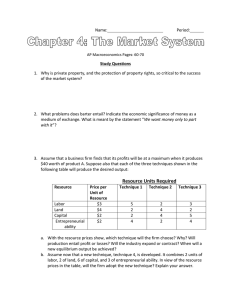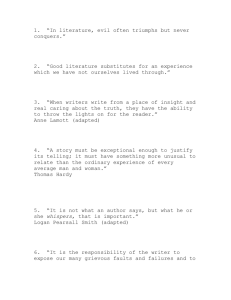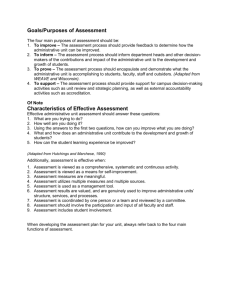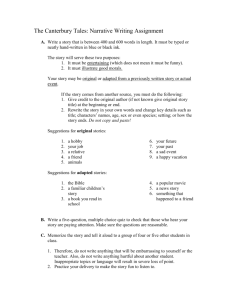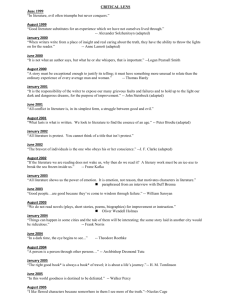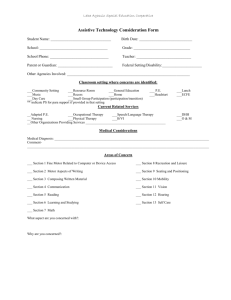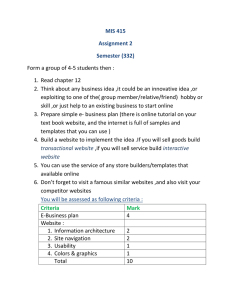ppt
advertisement
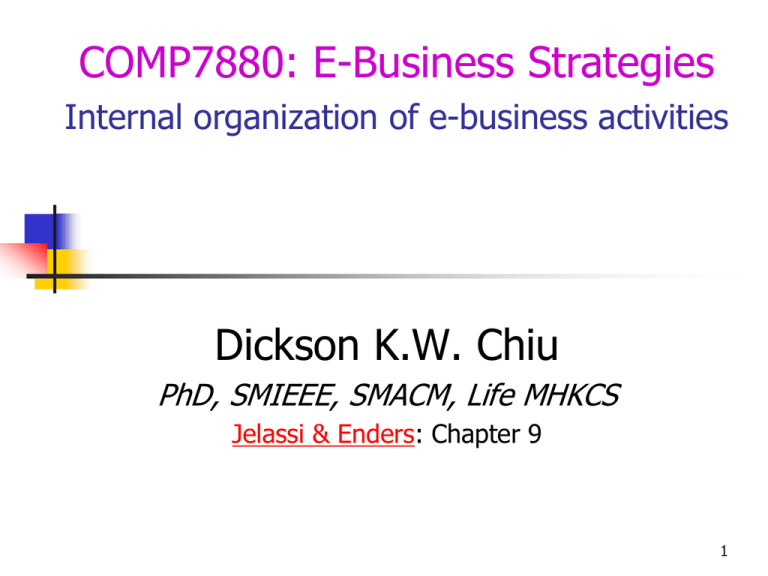
COMP7880: E-Business Strategies Internal organization of e-business activities Dickson K.W. Chiu PhD, SMIEEE, SMACM, Life MHKCS Jelassi & Enders: Chapter 9 1 Our Roadmap Mobile e-commerce strategy E-business strategy Strategy Strategy formulation implementation 12 Strategic analysis 3 External analysis 9 5 Internal organisation Strategy options Opportunities/ threats Strengths/ weaknesses 4 Internal analysis 6 Sustaining competitive advantage 8 7 Exploring new market spaces Creating and capturing value 10 13 Interaction with suppliers Implementation 11 Interaction with users/customers COMP7880-IO-2 PC industry (1990s) became increasingly fragmented IBMIntegrated value chain (1985) Unbundled value chain (1999) Micro processors, integrated circuits, memory chips Intel Motorola AMD Cyrix PCs Compaq Dell IBM Operating systems Windows Apple UNIX Mac OS Linux Source: Adapted from D. Heuskel (1999), p. 53. OS/2 Application software Microsoft Office Marketing, sales and distribution Retail Megastores Netscape Online Adobe Post order Direct sales Variety of options for making a product or service. Market transactions entail the purchase from an external provider on an individual one-by-one contractual basis. Long-term contracts entail the purchase from an external provider on a contractual basis, spanning over an extended period of time. Alliances entail the close co-operation of two separate firms that join up in the production of a certain product or service. Parent/ subsidiary Internal production entail the setting up of a distinct firm that operates separately from, yet under the auspices of, the parent company. entails a process that is managed completely internally, without any outsourcing to external providers. Reasons favoring ‘make’ or ‘buy’ decisions Reasons favouring ‘make’ decisions Reasons favouring ‘buy’ decisions Strong linkage between activities High economies of scale Confidentiality of information High transaction costs High capital requirements Specialized know-how Higher efficiency of the open markets Think: how does IT impacts? Clicks-and-mortar spectrum spans from integration to separation of activities Clicks-and-mortar spectrum Independent business/ spin-off (e.g. BOL.de) Strategic alliance (e.g. Amazon.com and Borders) Separation • greater focus • more flexibility • access to venture capital for funding Source: Adapted from R. Gulati and J. Garino (2000). Joint venture (e.g. KB Toys and BrainPlay.com) In-house division (e.g,Tesco.com) Integration • established brand • shared information • purchasing leverage • cross-promotion • distribution efficiencies • shared customer services Separation vs integration Separate organization Integrated organization • Greater focus • Established and trusted brand • More flexibility and faster decisions • Shared information • Entrepreneurial culture • Access to venture capital Source: R. Gulati and J. Garino (2000), pp. 107-114 • Cross-promotion • Purchasing leverage • Distribution efficiencies • Shared customer service Think: how does IT impacts? Traditional corporation can be unbundled into 3 distinct businesses Customer relationship management Identify, attract, and build relationships with customers Product innovation Conceive attractive new products and services and commercialise them Source: Adapted from J. Hagel and M. Singer (1999). Infrastructure management Build and manage facilities for highvolume, repetitive operational tasks Different imperatives regarding economics, culture, and competition Businesses I m p e r a t i v e s Economics Culture Competition Product innovation Customer relationship management Infrastructure management Early market entry allows for a premium price and a large market share; speed is the key High cost of customer acquisition makes it imperative to gain large shares of wallet; economies of scope are the key High fixed costs make large volumes essential to achieving low unit costs; economies of scale are the key Employee centered; coddling the creative ‘stars’ Highly service oriented; ‘customer comes first’ Cost focused; stress on standardization, predictability, efficiency Battle for talent; low barriers to entry; many small players thrive Battle for scope; rapid consolidation; a few big players dominate Battle for scale; rapid consolidation; a few big players dominate Source: Adapted from J. Hagel and M. Singer (1999). Channel conflict matrix analyses how to resolve different channel conflicts Relative importance of threatened channel High Low 1 Risk of conflict between different channels High Address channel conflict M a i l 2 Accept the decline of threatened channel o r d e r Traditional retailer 3 Low Reassure members of threatened channel Conf lict O t h e r s Internet 4 Ignore Source: Adapted from C. Bucklin, P. Thomas-Graham and E. Webster, ‘Channel conflict: when is it dangerous?’, McKinsey Quarterly, 1997, No. 3, pp. 36–43. For your project & exercise Repeat the methodology in this chapter for your project case study COMP7880-IO-11
